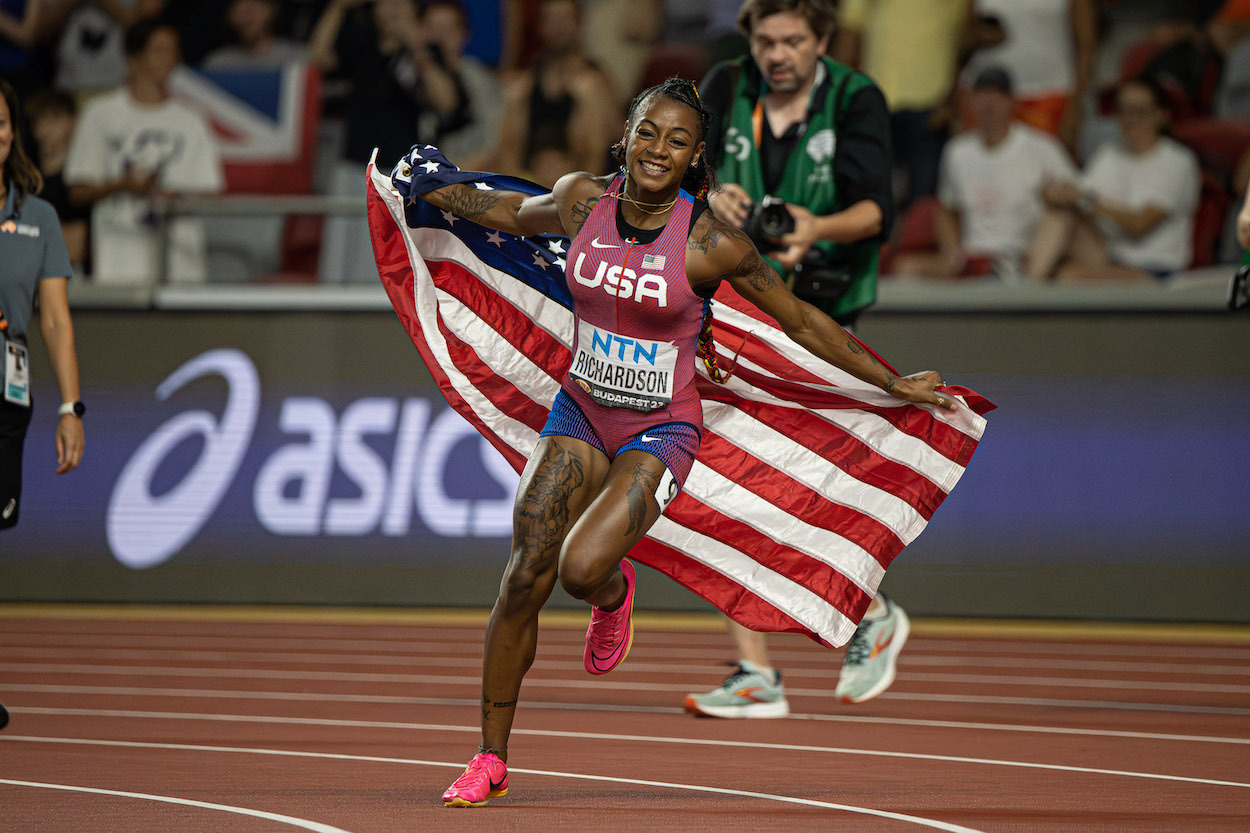It’s been a banner year for women’s sports. In the spring, the final game of the women’s NCAA tournament drew a record-breaking viewership, making it the most-viewed college event ever on ESPN+. This summer, the Tour de France Femmes staged a hugely successful follow-up to last summer’s debut race, and just last week, thousands of Women’s World Cup fans successfully demanded that Nike make a replica of English goalie Mary Earps’ jersey. For some, the victory of redesigned uniforms has hit much closer to home by finally taking into account their feedback—and peace of mind.
For the first time in 146 years, Wimbledon updated its dress code to allow women players to wear dark compression shorts under their regulation tennis whites in the name of assuaging period anxiety. Similarly, for the Women’s World Cup, the U.S. Women’s National Team did away with its signature white shorts and joined England, France, Canada, New Zealand, and Nigeria in making dark-colored shorts part of its game-day kit. Finally, at the 2023 World Athletics Championships in Budapest, a number of women on Team USA’s track and field team followed the precedent set by heptathlete Anna Hall in 2022 by donning Nike’s track and field leotard in lieu of a midriff-baring sports bra and spandex boyshort or bikini-like “buns.”
In pro basketball, track and field, soccer, and beyond, Nike’s power and influence as an official gear, footwear, and event sponsor is far-reaching. That degree—and duration—of influence makes the rah-rah messaging around some of the newly instated uniform redesigns worthy of a closer look. After all, the brand has partnered with U.S. Soccer since 1995, but first introduced World Cup uniforms cut for women in 2019. Similarly, the brand has partnered with the W.N.B.A since 2018 but only released women’s-specific game-day jerseys in 2021. The new track and field leotards seen in Budapest stemmed from feedback out of a female athletes’ think tank launched in 2020, although it’s long been understood that the anxieties surrounding the sport’s tight and tiny uniforms can start as early as high school, extending through the collegiate and professional levels.
“I did not realize how much I did not like having my stomach on show until I had a functional and valid option to change it,” the decorated British sprinter and Nike athlete Dina Asher-Smith recently told the New York Times. “For some, women empowerment is wearing a crop top and knickers, and that’s absolutely okay. But I wasn’t one of those girls, and when I was running around in the leotard prototypes testing and was confident that I wasn’t going to fall out of it, I was like, ‘Yeah, let’s go. Get this on.’”
By contrast, Tracksmith, a design-minded running apparel brand and up-and-comer in outfitting globally-ranked athletes, was far ahead of the curve in 2020. That year, the brand’s Amateur Support Program provided race day kits to 138 unsigned athletes at the Olympic Marathon Trials in Atlanta. Responding to requests from women competitors, the product team ensured that loose-fitting shorts and full-length tops were among the kit options provided to those competing to represent Team USA. Slowly but surely, other companies are catching on—better late than never.
Editors’ note: At the time of publication, Nike has not responded to a request for comment.

